Comprehensive Guide to Technical SEO: Boost Your Website Performance and User Experience
Are you boosting your site with technical SEO yet? Getting the hang of it can seriously help your search rankings. Think of tweaking URLs, dealing with faceted navigation, making sure your site’s mobile-friendly, and adding schema. Up for the challenge of fine-tuning your site's tech stuff? Please keep reading to find out the magic of effective technical SEO.

Key Takeaways
Optimizing your website's back end for modern search engines. This improves crawlability, indexing, and performance.
Key components include site structure, page speed, and URL structures. JavaScript SEO and mobile optimization are also important for search engines and user experience.
Using strategies like structured data, XML sitemaps, canonical tags, and href tags can significantly boost search visibility and performance.
Addressing duplicate content, broken links, and crawl errors and ensuring a clean URL structure is critical for maintaining SEO health.
Tools like Google Search Console, Screaming Frog, Google Analytics, and Semrush can help with site audits and performance monitoring.
What Is Technical SEO?
Technical SEO means optimizing your site's tech to meet modern search engines' requirements. This optimization isn't just about keywords. It ensures search engines can efficiently crawl, index, and render your site. Technical SEO enhances organic search visibility and improves user experience. But beyond technical optimizations, healthcare practitioners also need to focus on strategic SEO technique explore our SEO fundamentals for healthcare practitioners to learn more.
Key Components of Technical SEO
Crawlability: Search engines must find and index your site's content. A well-structured site with a clear hierarchy and good navigation helps. Your content should be accessible for search engines to access through proper internal linking and sitemaps.
Indexing: Search engines must properly index your site before they display it in search results. Ensuring all valuable pages are indexed without duplicates or low-quality pages can improve your site's performance.
Site Structure and Navigation: A flat, organized site structure helps search engines crawl the site and makes it easy for users to navigate. A logical directory structure and meaningful URLs help engines and users understand your site's layout.
PageSpeed: Fast-loading pages provide a better user experience and a confirmed ranking factor. Optimizing your site's load times can boost user satisfaction and search rankings. Compress images, minify CSS and JS files, and leverage browser caching to do this.
URL Structures: Proper, consistent URL structures are crucial, especially for multi-language or multi-regional sites. Clean URLs help search engines understand page content and improve user trust.
JavaScript SEO: Ensure critical content is accessible without relying solely on JavaScript. Use dynamic rendering or server-side rendering to make JavaScript-heavy sites search-engine friendly.
Log File Analysis: Regularly analyzing server log files helps you understand how search engines crawl your site, identifying potential issues or inefficiencies in their crawl patterns.
Mobile Optimization: Your site must be fully responsive and mobile-friendly. With Google's Mobile-First Indexing, mobile compatibility directly impacts your search rankings. Use tools like Google's Mobile-Friendly Test to ensure your site meets mobile standards.
Robots.txt and Noindex Tags: Guide search engine crawlers using robots.txt to prevent non-essential pages from being crawled, saving valuable crawl budget. Use no index meta tags to avoid the indexing of low-value pages, ensuring only beneficial content appears in search results.
Structured Data: Carry out schema markup to help search engines understand content context. Use plugins or manual code insertion to add and validate structured data, improving your site's visibility in search results.
Core Web Vitals Monitoring: Continuously monitor Core Web Vitals metrics—such as loading performance, interactivity, and visual stability. These metrics affect user experience and are now part of Google's ranking criteria.
AMP Pages: Ensure proper tracking and analytics for AMP content to improve page performance on mobile devices.
Pagination SEO: Manage paginated content with rel="prev" and rel="next" tags, and consider the implications of infinite scroll designs.
Faceted Navigation: Manage faceted navigation on e-commerce sites to avoid duplicate content and crawl issues. Properly configured faceted navigation enhances user experience without harming SEO.
Site Search Optimization: Optimize internal search functionality to help users find relevant information quickly. A good internal search can reduce bounce rates and improve site engagement.
GDPR and Privacy Compliance: Carry out privacy policies and cookie consent mechanisms to comply with GDPR, ensuring trust and legal adherence.
Importance Of Technical SEO In Digital Marketing
Technical SEO is vital in digital marketing. It ensures your site meets search engines' technical requirements. Focusing on technical elements can improve your website’s visibility and user experience.
Enhancing Website Visibility
Technical SEO directly influences search engine rankings. Optimizing technical aspects like page speed, internal linking, and sitemaps helps search engines crawl and index your site more effectively. When your technical elements are optimized, search engines can easily comprehend your site's structure, improving your rankings in search results. For instance, implementing structured data allows search engines to understand your content better, resulting in rich snippets that enhance your site's visibility. Ensuring proper tracking and analytics for Accelerated Mobile Pages (AMP) also contributes to higher rankings by improving load times on mobile devices.
Proper pagination management using rel="prev" and rel="next" tags is essential for paginated content. If your site uses infinite scroll, please understand its SEO implications to avoid issues with content indexing. Faceted navigation on e-commerce sites requires careful attention to prevent duplicate content and crawl inefficiencies. Optimizing site search functionality can also improve internal linking and guide search engines to essential pages.
Improving User Experience
Technical SEO helps search engines and enhances user experiences. Ensuring your site is fast, secure, and easy to navigate can increase engagement, conversions, and revenue.
Core Web Vitals are critical for user satisfaction. They include:
Largest Contentful Paint (LCP)
First Input Delay (FID)
Cumulative Layout Shift (CLS)
Monitoring and optimizing these metrics ensures a smooth, responsive experience for your users.
Click depth is another crucial factor for user experience. Important pages should be accessible within three clicks from the homepage. Tools like Ahrefs can analyze your site structure and help reduce click depth, emphasizing key content. Regularly checking for and fixing broken links keeps navigation smooth, reducing user frustration and improving the site's quality.
Privacy is also a critical component of user experience. Implementing privacy policies and cookie consent mechanisms is essential, especially for compliance with regulations like GDPR. I want you to know that your site's technical infrastructure supports these privacy features, which shows your commitment to user security and trust and boosts their experience.
By focusing on these technical aspects, you improve your search engine rankings and ensure a positive, seamless user experience.
Key Components Of Technical SEO
Incorporating technical SEO helps naturopathic and functional healthcare practitioners improve their website's performance. Understanding the technical details can significantly impact your digital marketing success.
Website Architecture
A well-structured website ensures easy navigation and better indexing by search engines. Could you car out a flat and organized site structure so that all pages are just a few links away from each other? Submitting properly configured XML sitemaps assists search engines in crawling your site efficiently. Also, using canonical tags avoids duplicate content issues by indicating the preferred version of a page. Clean and descriptive URL structures with relevant keywords enhance user experience and search engine comprehension.
Site Speed Optimization
Site speed is vital for user experience and search engine ranking. Aim to reduce load times by optimizing images, minifying and combining CSS and JavaScript files, and employing browser caching. Use tools like Google PageSpeed Insights to identify performance issues. Focus on Core Web Vitals—such as Largest Contentful Paint (LCP), First Input Delay (FID), and Cumulative Layout Shift (CLS)—to ensure your site meets modern performance standards.

Mobile-Friendliness
With most users accessing websites on mobile devices, mobile optimization is essential. Ensure your site is fully responsive and passes Google's Mobile-Friendly Test. Optimize mobile page speed and Core Web Vitals by prioritizing fast-loading content and minimizing layout shifts. Employ proper server configurations, such as HTTP status codes and secure versions of URLs, to maintain the integrity and speed of your mobile site.
Technical SEO Best Practices
Technical SEO forms the backbone of your website's visibility. Mastering these practices ensures your site ranks well and provides an excellent user experience.

Structured Data and Schema Markup
Integrating structured data and schema markup within your website enables search engines to better understand your content. By offering detailed metadata, you can enhance your SERP features. For example, schema markup for healthcare articles can highlight essential information like author names, medical reviews, and publication dates. This additional context helps search engines, leading to improved search visibility and potential rich snippets.
XML Sitemaps
XML sitemaps act as roadmaps for search engines. They guide crawlers to essential pages on your site, ensuring comprehensive indexing. Creating separate sitemaps for various content types, such as blog posts, product pages, and service offerings, creates clarity. Including image and video sitemaps further boosts the discoverability of multimedia content, which is essential for engaging users. Please update and submit these sitemaps using Google Search Console to keep your website's indexation in check.
Canonical Tags and URL Structure
Implementing canonical tags prevents duplicate content issues and consolidates ranking signals for similar pages. Canonical tags should point to the preferred version of content across multiple URLs. Also, maintaining a clean URL structure aids user navigation and search engine crawling. For instance, URLs like "example.com/naturopathic-services" are both descriptive and SEO-friendly. Use hreflang tags for multi-regional sites to serve users the correct language and regional versions, ensuring global reach without duplicate content penalties.
Common Technical SEO Issues And How To Fix Them
Technical SEO is essential for ensuring your functional healthcare website ranks well. Let's jump into some common issues and how you can resolve them to improve visibility and user experience.

Broken Links and Redirects
Broken links and faulty redirects diminish user experience and lower your website's search engine rankings. These issues often arise from changes in URL structures or deleting or moving pages. Use tools like Google Analytics to monitor and identify broken links and redirects. Ensure all URLs return a 200 OK status and set canonical URLs accurately. Carry out 301 redirects when moving content to maintain link equity and user flow.
Duplicate Content
Duplicate content confuses search engines and harms your site's ranking. It can result from multiple URLs pointing to the same page or having near-identical content across different pages. Use canonical tags to indicate your preferred version. Consolidate similar pages to provide unique, valuable content to your readers. Consider URL parameters and session IDs, which might create duplicate content, and address those effectively.
Crawl Errors
Crawl errors impede search engine bots from indexing your site efficiently, leading to missed ranking opportunities. To guide crawlers, regularly submit an XML sitemap via Google Search Console. Analyze server log files to spot these errors and address them by ensuring critical pages are accessible. Use robots.txt files to manage which parts of your site to crawl, and use plugins like Yoast SEO to simplify creating and updating sitemaps.
Address these typical technical SEO issues to enhance your website's performance, leading to better search engine rankings and user experience.
Tools For Technical SEO
Mastering technical SEO boosts your search engine rankings and user experience. Leveraging the right tools can significantly enhance your capabilities in this domain.
Google Search Console
Google Search Console (GSC) is vital for tracking and improving your site's search visibility. It's free, easy to access, and has critical error detection and performance tracking features.
GSC allows you to pinpoint 404 errors, ensuring smooth navigation across your site. You can maintain an error-free site index by examining your Robots.txt files and verifying your sitemaps. Submitting your XML sitemap to GSC improves your site's crawl ability and helps search engines understand your content. This tool also provides insights into your search rankings, helping refine your SEO strategies.
Screaming Frog SEO Spider
The Screaming Frog SEO Spider (one of my favorite tools) is a versatile tool for detailed site audits - used to detect structural issues.
This tool finds duplicate page titles and descriptions and ensures your metadata is unique and optimized. It examines URL structures and highlights broken links. Using Screaming Frog often can help keep your website well-structured and user-friendly, which will improve your search rankings and user experience.
Other Tools
Other tools complement the primary ones, providing comprehensive insights and additional functionalities.
SEO Checker: This free tool audits website SEO and gives feedback on optimization and priorities for fixes.
Google Analytics: This free tool tracks website traffic and user behavior and provides data for making informed decisions.
Semrush/ahrefs: A paid tool that offers site audits, on-page SEO checks, and log file analysis, making it a robust option for in-depth SEO analysis.
Using these tools in your technical SEO strategy can boost your website's performance and visibility. Please regularly update and monitor these tools for the best results.
Conclusion
Getting the hang of technical SEO is essential for seeing your website and making it user-friendly. Pay attention to how fast your pages load, linking within your site, and using structured data. These tweaks can ramp up your site's performance. Working on your site’s layout and mobile compatibility and making SEO fixes will give both user experience and search rankings a nice bump.
Tools like Google Search Console and Screaming Frog SEO Spider are great for tracking and fine-tuning your site. To stay on top of your technical SEO game, keep things fresh with regular updates and check-ups. Being proactive will keep your website running smoothly.






